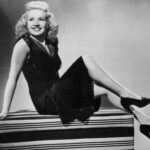When Tears for Fears embarked on their second album journey in 1984, they were a duo with a clear vision: to transcend the fleeting trends of synth-pop and establish themselves as artists of substance. Following their debut, The Hurting, Curt Smith and Roland Orzabal aimed for something grander, more universally resonant, yet retaining their signature depth. Songs From the Big Chair achieved just that, becoming a defining album of the 1980s, yet distinct from its contemporaries. While polished and undeniably accessible, it possessed a complexity and intellectual weight that set it apart.
Where The Hurting delved into themes of personal trauma and inner turmoil, Songs From the Big Chair broadened its scope, engaging with the world outside. The album is characterized by anthemic pronouncements – “Shout, shout, let it all out!” and “Everybody wants to rule the world!” – statements as bold and impactful as billboards. Despite the clarity of the lyrics and the expansive melodies, the sophisticated production and arrangements ensured the band maintained an aura of artistic integrity, even as their popularity soared to arena-filling heights. Smith and Orzabal, while aware of the synth-driven sounds of Depeche Mode and Soft Cell, drew inspiration from artists like Peter Gabriel, prioritizing meticulous studio work, sometimes spending ten hours refining details, without losing sight of the album’s overall impact.
Though firmly cemented in the collective memory as an ’80s classic, Songs From the Big Chair is, in essence, a diverse collection of musical styles. Deconstructing the tracks reveals a fascinating blend: the industrial-tinged intensity of “Shout,” the jazzy introspection of “I Believe,” the new-age ambient textures of “Listen,” and the classic 60s pop sensibilities of “Everybody Wants to Rule the World.” This eclectic mix led the band to describe the album title as a deliberate indication of its nature – a collection of “Songs From…” rather than a cohesive, unified statement.
However, the album’s defining characteristics – its intricate compositions, refined sound, and unwavering sincerity – are delivered with such force that they create a powerful and unified listening experience. This potent combination resonated deeply with subsequent generations of artists. The influence of Songs From the Big Chair can be heard in the music of Smashing Pumpkins and Arcade Fire, as well as in the work of Kanye West, Drake, and Nas, all of whom have sampled Tears for Fears. These diverse artists, spanning genres and generations, were drawn to the album’s ability to balance profound emotional expression with meticulous sonic detail and undeniable pop appeal.
The legacy of Songs From The Big Chair was further solidified by the 1985 documentary Scenes From the Big Chair. This film, interweaving music videos, live performances, and candid interview segments, offered a behind-the-scenes glimpse into the band’s world at the peak of their success. One memorable scene captures the band’s playful yet ambitious spirit. A cameraperson interviews a photographer from the German teen magazine Bravo, inquiring about his subject. The photographer, struggling with the band’s name, turns to Orzabal and asks for confirmation. “Tears for Fears?” he ventures. Orzabal, with a wry smile, shakes his head and quips, “No, we’re the Beatles.” A joke, undoubtedly, but one that hinted at the monumental aspirations they were striving for, and arguably, achieving with Songs From the Big Chair.

